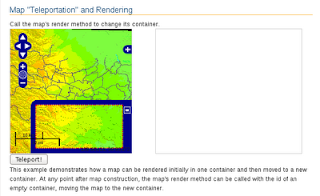HTML ファイルを新規作成します。
「openlayersTokyoproj」 を右クリックして 新規 -> HTML ファイル をクリック。
「HTML ファイル」ウィンドウの「ファイル名(任意:openlayers_teleportation.html)」に入力して「完了」ボタンをクリック。
「charset」を「utf-8」にします。
「examples」の「teleportation.html」の内容をコピーして新規作成したファイルに貼り付けます。
コードの修正とちょっと解説します。
<html xmlns="http://www.w3.org/1999/xhtml">
<head>
<meta http-equiv="Content-Type" content="text/html; charset=utf-8">
<title>OpenLayers38 Map Teleportation</title>
<link rel="stylesheet" href="./theme/default/style.css" type="text/css" />
<link rel="stylesheet" href="./examples/style.css" type="text/css" />
<!-- OpenLayers ライブラリ -->
<script src="./lib/Firebug/firebug.js"></script>
<script src="./lib/OpenLayers.js"></script>
<!-- Proj4js ライブラリ -->
<script type="text/javascript" src="./lib/proj4js/lib/proj4js-compressed.js"></script>
<script type="text/javascript" src="./lib/proj4js/lib/projCode/tmerc.js"></script>
<script type="text/javascript" src="./lib/proj4js/lib/defs/EPSG2456.js"></script>
<!-- マップのスタイル -->
<style type="text/css">
#wrapper {
position: relative;
}
.spot1 {
width: 250px;
}
.spot2 {
width: 300px;
position: absolute;
left: 300px;
top: 0;
}
</style>
<!-- Transportation のコード -->
<script type="text/javascript">
var map, layer1, layer2, spot=1; // 修正
function init(){
// 東京都用 map の設定
mapOptions = {
div: "spot1",
projection: new OpenLayers.Projection("EPSG:2456"),
displayProjection: new OpenLayers.Projection("EPSG:4326"),
maxResolution: 183.593750,
units: 'meters',
maxExtent: new OpenLayers.Bounds(-279000,1054000,-185000,1104000)
};
map = new OpenLayers.Map(mapOptions);
// 東京都区画レイヤ
layer1 = new OpenLayers.Layer.WMS( "Tokyo Height WMS",
"http://192.168.1.6/cgi-bin/mapserv?",
{
map: '/home/user/mapfile/tokyo_bmi_pgis_img.map',
layers: 'height',
format: 'image/png'
});
layer2 = new OpenLayers.Layer.WMS( "Tokyo Kukaku Sen WMS",
"http://192.168.1.6/cgi-bin/mapserv?",
{
map: '/home/user/mapfile/tokyo_bmi_pgis_img2.map',
layers: 'kukaku',
transparent: true,
format: 'image/png'
});
map.addLayers([layer1, layer2]);
map.zoomToMaxExtent();
// unit がメータのときの Overview の設定
var controlOptions = {
mapOptions: mapOptions
};
var overview = new OpenLayers.Control.OverviewMap(controlOptions);
map.addControl(overview);
overview.maximizeControl();
map.addControl(new OpenLayers.Control.LayerSwitcher()); // 追加
map.addControl(new OpenLayers.Control.MousePosition()); // 追加
map.addControl(new OpenLayers.Control.ScaleLine()); // 追加
// ここまで
} // End of function init()
// テレポートのコード
function teleport() {
if (spot == 1) {
spot = 2;
} else {
spot = 1;
}
map.render("spot" + spot);
}
</script>
</head>
<!-- body のコード -->
<body onload="init()">
<h1 id="title">Map "Teleportation" and Rendering</h1>
<div id="tags"></div>
<p id="shortdesc">Call the map's render method to change its container.</p>
<div id="wrapper">
<div id="spot1" class="smallmap spot1"></div>
<div id="spot2" class="smallmap spot2"></div>
<!-- スタイルシートを2つ設定 -->
</div>
<input type="button" onclick="teleport()" value="Teleport!"></input>
<div id="docs">
This example demonstrates how a map can be rendered initially in one
container and then moved to a new container. At any point after map
construction, the map's render method can be called with the id of
an empty container, moving the map to the new container.
</div>
</body>
</html>

説明を訳してみました。
地図のコンテナを変更する render メソッドを呼び出します。
この例では、地図がどのように最初に1つのコンテナにレンダリングすることができ、それから新しいコンテナに移動するかを示します。地図の構築後、すべてのポイントで、マップのレンダリング方法が空のコンテナのidで呼び出すことができ、マップを新しいコンテナに移動します。

0 件のコメント:
コメントを投稿